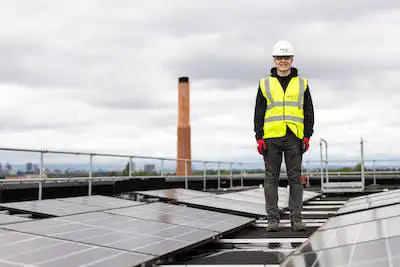Sun, Size, and System: The Initial Equation
Sunshine, the fuel for your solar savings engine, varies greatly depending on your location. Sunnier regions naturally enjoy higher potential energy production, translating to greater cost offsets. Next comes the size of your solar roof, determined by available space and your desired energy output. A larger system generates more power, but also comes with a higher upfront cost. Finally, the specific solar panel system you choose, its efficiency, and installation complexity all play a role in determining the initial investment.
Cost Considerations: The Investment and Incentives
Solar roofs, while offering long-term savings, require an upfront investment. The average cost in the US ranges from $15,000 to $25,000, but can fluctuate based on factors mentioned above. Fortunately, several incentives can significantly reduce this burden. The federal Residential Clean Energy Credit currently offers a 30% tax credit on the system's cost. Additionally, state and local rebates and incentives can further sweeten the deal. Remember to factor in these incentives when calculating your net investment.
Savings Spectrum: From Bill Reduction to Energy Independence
The most immediate and noticeable impact of a solar roof is on your electricity bills. The generated power offsets your traditional grid consumption, leading to reduced monthly charges. The amount saved depends on your system's size and local electricity rates. In areas with high electricity costs, the savings can be substantial.
Beyond bill reduction, a solar roof can propel you towards greater energy independence. By generating significant portions of your own power, you become less reliant on the grid, insulating yourself from future electricity price hikes. This independence also empowers you to make informed choices about your energy consumption, potentially leading to further cost savings through energy-efficient practices.
The Long Game: Payback Period and Lifetime Savings
While an initial investment, solar roofs are long-term investments with substantial returns. The payback period, the time it takes for your energy savings to offset the initial cost, typically ranges from 5 to 10 years. However, with a lifespan of 25 to 30 years, solar panels continue generating savings well beyond the payback period. Over the system's lifetime, the average homeowner in the US can expect to save between $20,000 and $96,000 on electricity costs.
Shining a Light on Additional Benefits
The financial benefits of solar roofs are only part of the story. By reducing your reliance on fossil fuels, you contribute to a cleaner environment and lower greenhouse gas emissions. Additionally, solar roofs can increase your home's value, making them a worthwhile investment not just for your wallet, but for the planet and your property.
Charting Your Solar Course: Tools and Resources
To get a personalized estimate of your potential solar savings, several online tools and resources are available. The National Renewable Energy Laboratory (NREL) PVWatts Calculator allows you to input your location, roof size, and system details to estimate energy production and potential cost savings. Additionally, consulting with local solar installers can provide tailored quotes and insights specific to your situation.
Conclusion: Illuminating Your Path to Sustainable Savings
While the exact amount you can save with a solar roof depends on various factors, the potential for significant cost reductions and environmental benefits is undeniable. By carefully considering your location, energy needs, and budget, you can make an informed decision about joining the growing solar revolution. Remember, a solar roof is not just an investment in your wallet, but an investment in a cleaner future for yourself and the planet. So, soak up the sunlight, explore your options, and illuminate your path to sustainable savings with a solar roof.
Additional Resources:
National Renewable Energy Laboratory PVWatts Calculator: https://pvwatts.nrel.gov/
Database of State Incentives for Renewables & Efficiency (DSIRE): https://www.dsireusa.org/
Solar Energy Industries Association (SEIA): https://www.seia.org/
I hope this information helps you make an informed decision about whether a solar roof is right for you. Please let me know if you have any other questions.

